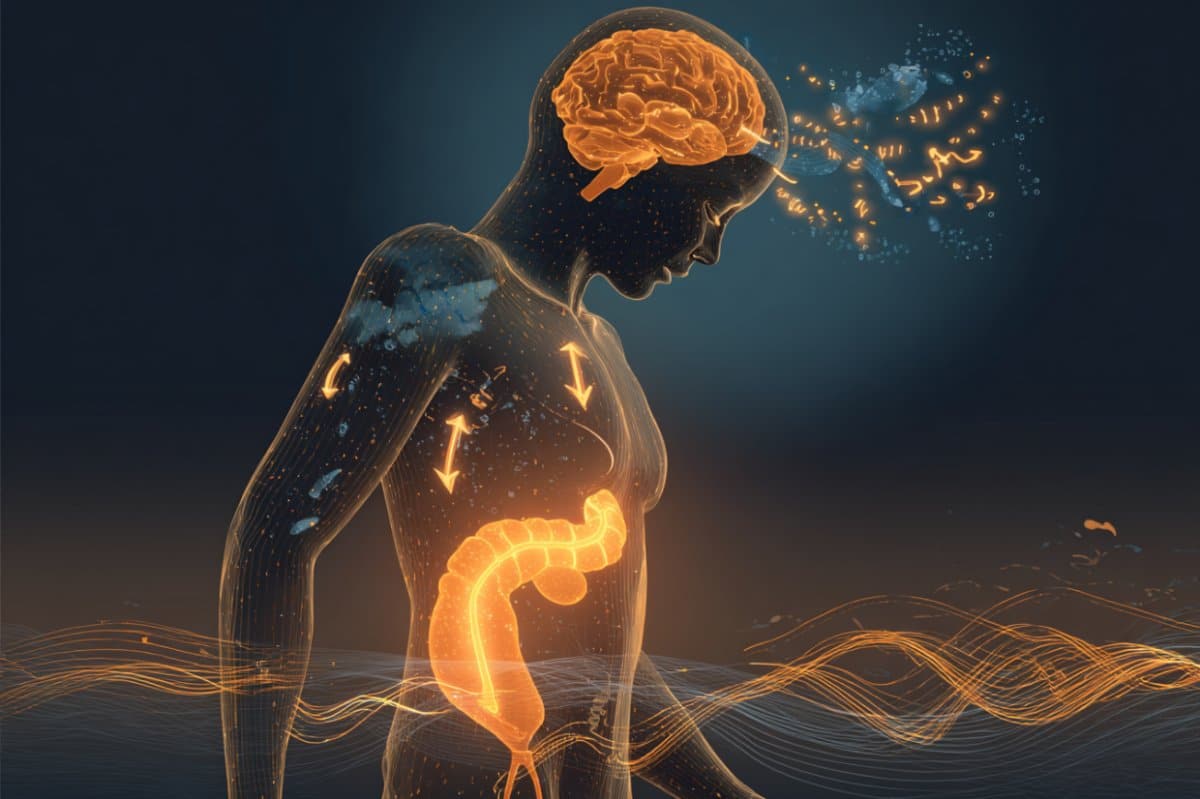Summary: A new study uncovers a pancreas–hippocampus feedback loop that may help explain mood swings in bipolar disorder. Using patient-derived pancreatic islets, researchers found reduced insulin secretion linked to elevated RORβ, a bipolar risk gene.
In mice, pancreatic RORβ overexpression caused depression-like behaviors during the day and mania-like behaviors at night through shifts in insulin release and hippocampal activity. The findings suggest that metabolic and mood symptoms in bipolar disorder are intertwined through a circadian brain–body circuit.
Key Facts
- Genetic Link: Overexpression of the bipolar risk gene RORβ in pancreatic β cells altered insulin release and mood-related behaviors.
- Circadian Dynamics: Depression-like states in the light phase were followed by mania-like states in the dark phase, driven by pancreas–brain feedback.
- Integrated Mechanism: The study identifies a bidirectional pancreas–hippocampus loop that may couple metabolic dysfunction to mood instability.
Why This Matters
- Why This Matters: Offers a novel biological explanation for the co-occurrence of metabolic changes and mood swings in bipolar disorder.
- How This Aligns With Previous Research: Builds on evidence linking insulin signaling, circadian rhythms, and psychiatric symptoms.
- Future Implications: Could inspire treatments that target pancreatic function or circadian regulation to stabilize mood cycles.
Source: Neuroscience News
For years, researchers have observed that individuals with neuropsychiatric disorders—particularly bipolar disorder—often present with metabolic symptoms such as impaired glucose regulation or altered insulin levels.
While the overlap is well documented, the biological pathways linking metabolic function to mood fluctuations have been far less clear.

Now, new research suggests that part of the answer may lie in a surprising organ–brain connection: a feedback loop between the pancreas and the hippocampus that is shaped by circadian rhythms.
Using induced pluripotent stem cell-derived pancreatic islets from people with bipolar disorder, researchers uncovered a distinct cellular abnormality—reduced insulin secretion. This impairment was linked to higher-than-normal expression of the gene RORβ, a known susceptibility factor for bipolar disorder.
Modeling the Disorder in Mice
To better understand how RORβ might bridge metabolic and mood symptoms, the team engineered mice to overexpress the gene specifically in pancreatic β cells. The results were striking: these mice displayed depression-like behaviors during the light phase of the day and mania-like behaviors during the dark phase—mirroring the cyclical mood states seen in bipolar disorder.
At the cellular level, RORβ overexpression during the light phase suppressed insulin release from pancreatic islets. This was accompanied by heightened activity in the hippocampus, a brain region central to mood regulation, memory, and stress response.
Importantly, these mood-related effects were not isolated to one time window; the hippocampal hyperactivity seen in the light phase triggered a delayed shift in metabolic function. By the dark phase, insulin release was elevated, hippocampal activity was reduced, and mania-like behaviors emerged.
The Pancreas–Hippocampus Feedback Loop
This dynamic pattern revealed a previously unrecognized mechanism: a bidirectional feedback loop in which pancreatic insulin signaling influences hippocampal activity, and changes in hippocampal function feed back to affect pancreatic output. The loop operates on a circadian rhythm, with disruptions in one phase of the cycle setting up altered brain–body interactions in the next.
The findings suggest that, in bipolar disorder, dysregulation in this pancreas–hippocampus circuit could underlie the alternating mood states—depressive lows and manic highs—by coupling them to shifts in insulin release and neuronal activity. In essence, metabolic and mood symptoms may be two sides of the same biological coin.
Beyond Bipolar Disorder
Although the study focused on bipolar disorder, the implications extend to a wider range of neuropsychiatric conditions where metabolic changes and mood dysregulation co-occur, such as major depressive disorder and schizophrenia. It also raises the possibility that targeting pancreatic function could indirectly stabilize brain activity and improve mood symptoms.
Given that RORβ is a circadian regulator, the work also underscores the potential importance of time-of-day effects in both research and treatment. Interventions that align with or correct circadian disruptions—whether through medication timing, light therapy, or dietary patterns—may help normalize the pancreas–hippocampus feedback cycle.
A New Integrative Model
This research provides a compelling integrative model for bipolar disorder—one that bridges psychiatry, metabolism, and chronobiology. By linking a specific genetic factor to both pancreatic dysfunction and cyclical hippocampal activity, it reframes bipolar disorder not solely as a brain-based illness but as a whole-body condition in which metabolic and neural systems are deeply intertwined.
Further studies will be needed to confirm the pancreas–hippocampus feedback loop in humans and determine whether interventions targeting RORβ or insulin regulation can meaningfully alter mood cycles. If so, this could open a novel therapeutic frontier—one where treating the body may be just as crucial as treating the brain.
About this neuroscience and bipolar disorder research news
Author: Neuroscience News Editorial Team
Contact: Neuroscience News
Source: Neuroscience News Editorial Team – Neuroscience News
Image: The image is credited to Neuroscience News
Original Research: Closed access.
“A pancreas–hippocampus feedback mechanism regulates circadian changes in depression-related behaviors” by Yao-Nan Liu et al. Nature Neuroscience
Abstract
A pancreas–hippocampus feedback mechanism regulates circadian changes in depression-related behaviors
Individuals with neuropsychiatric disorders often show metabolic symptoms. However, the mechanisms underlying this co-occurrence remain unclear.
Here we show that induced pluripotent stem cell-derived pancreatic islets from individuals with bipolar disorder have insulin secretion deficits caused by increased expression of RORβ, a susceptibility gene for bipolar disorder.
Enhancing RORβ expression in mouse pancreatic β cells induced depression-related behaviors in the light phase and mania-like behaviors in the dark phase.
Pancreatic RORβ overexpression in the light phase reduced insulin release from islets, inducing hippocampal hyperactivity and depression-like behaviors.
Furthermore, this hippocampal hyperactivity in the light phase had the delayed effect of promoting insulin release in the dark phase, resulting in mania-like behaviors and hippocampal neuronal hypoactivity.
Our results in mice point to a pancreas–hippocampus feedback mechanism by which metabolic and circadian factors cooperate to generate behavioral fluctuations and which may play a role in bipolar disorder.







